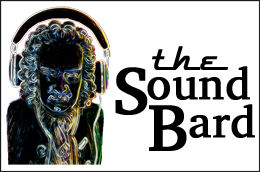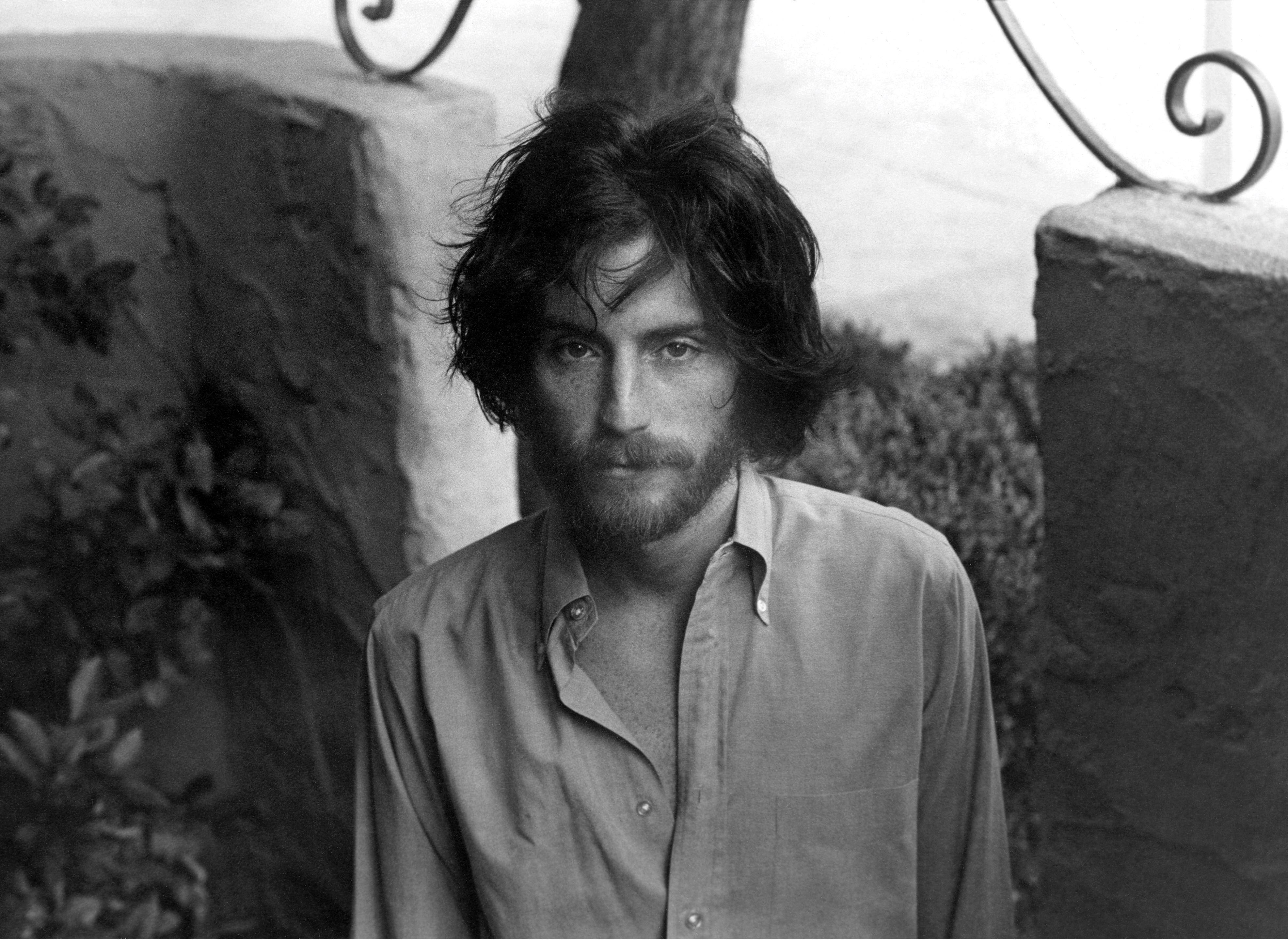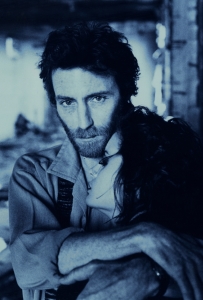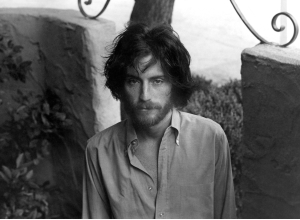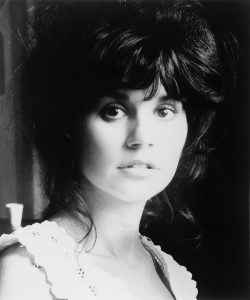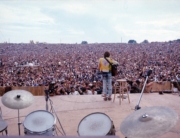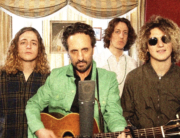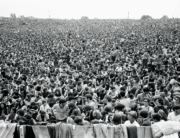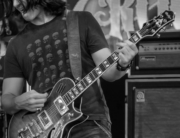BY MIKE METTLER — MARCH 24, 2016
Consummate singer/songwriter JD Souther pours a lot of history into every line he writes and records. “I can’t consciously put my finger on it, but I can remember probably every piece of music I’ve ever heard,” he admits. “But it’s just at certain times, not all at once. I’m sure bits of it come out in everything I write.”
Souther also has an uncanny knack for making a melody all his own, and he has a critical ear for just how good the finished product has to sound. (More on that in a bit.) By now, your wheels are turning as to what you personally know of Souther’s CV. Let me help with that. Not only was Souther at the forefront of the singer/songwriter movement that emerged in the early 1970s, but if you sift through some prime album credits, you’ll find he’s co-written some of the biggest songs of the modern rock era, including the Eagles’ “Best of My Love,” “New Kid in Town,” “Victim of Love,” and “Heartache Tonight.” On his own, he wrote “Run Like a Thief,” which Bonnie Raitt hit out of the park on 1975’s Home Plate, and he was also a chief collaborator of onetime paramour Linda Ronstadt, having produced Don’t Cry Now (1973), penned “Faithless Love” (on 1974’s Heart Like a Wheel), and then sang with her on the title tracks for Prisoner in Disguise (1975) and Hasten Down the Wind (1976). And yes, you’re probably also aware of his uber-catchy, Roy Orbisonesque Top 10 1979 single “You’re Only Lonely.” In short, JD Souther could very well be the unsung VIP of American music. (Oops, did I just bury the lead?)
And now, thanks to Omnivore Records and label head/reissue co-producer Cheryl Pawelski, we get to revisit Souther’s own recorded canon with the triple-threat CD reissuing of his first three heretofore hard-to-find solo albums: John David Souther (1972), Black Rose (1976), and Home by Dawn (1984). They’re all also loaded with a number of bonus tracks, demos, and live takes. “We went into my massive tape vault and pulled a bunch of stuff,” Souther reports. “We wanted to get these three albums put out close together so that they could be felt as a progression and a representation of the time.”
Souther, 70, and I got on the line to discuss the improved sonics of this reissue series, writing with Glenn Frey, sharing golden-ear minutiae with Ronstadt, and his passion for high resolution and great stereo gear. Some people call it music and some people call it gold, but nobody knows how to hone a mix quite like JD does.
Mike Mettler: One thing you said in the liner notes for this reissue series was, “I try to design every one of my albums to sound different than the one before it. If you’re making a movie, you’re not making the same movie.” After having listened to these three albums back to back a few times, I have to agree with that statement in full.
JD Souther: Yeah, they really are different. Until we started on this project, I never had to listen to them all so close together. And I definitely got what I was after, which was a different movie every time.
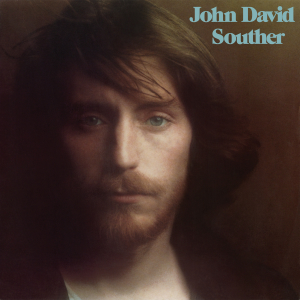 Mettler: I also agree with what you said about the John David Souther record in terms of there being a clarity of tone and space, something I think is lacking in many modern recordings. You need to allow certain words and phrases to breathe across the different bars, and not have everything “hit” you full-on all of the time. You set a nice template in ’71 and ’72 for that kind of style.
Mettler: I also agree with what you said about the John David Souther record in terms of there being a clarity of tone and space, something I think is lacking in many modern recordings. You need to allow certain words and phrases to breathe across the different bars, and not have everything “hit” you full-on all of the time. You set a nice template in ’71 and ’72 for that kind of style.
Souther: Thank you. Well, Miles Davis always said the space between the notes is just as important as the notes. Space — space just works. I don’t critique one particular era of music over another, but I think one thing that is problematic now sometimes is, especially with pop music, there’s absolutely no space left in the records. It’s just thing upon thing upon thing. Every vocal is doubled and processed and harmonized. It’s a little exhausting, and it doesn’t really give you time to absorb what’s happening. People might argue with that and say not much is happening that’s truly musical (chuckles), but you might not know it if it was anyway. There’s so much production crammed into all the nooks and crannies.
Mettler: Why do you think that is? What’s the need for doing it that way nowadays?
Souther: They’re working on a digital grid, which just encourages you to fill up every blank space that you see.
Mettler: Right, maybe there’s just too much information in front of you with Pro Tools. You see an empty space there, you want to fill it up with something.
Souther: Yeah, exactly. I think so. Sometimes, it’s just that simple.
Mettler: Are you more of an analog guy than a digital guy at this point?
Souther: Well, I have learned to enjoy Pro Tools. You no longer end up with 12 boxes of tape on the floor that you have to sort back through and cut.
There was a period of time where tape quality became very inconsistent. There was such low demand for it that a lot of tape manufacturers went out of business, and what was left was erratic in quality. Now that there are more people doing things analog, tape quality is more consistent again.
But there are also so many analog plug-ins you can use with Pro Tools now that you don’t really have to have boxes of tape scattered about. There are ways to make things sound analog. You just have to be willing to accept that it’s a little duskier-sounding, and that it doesn’t have quite the extreme highs and the brilliance off the top. It doesn’t have the splash that digital does, but if you want to cut with analog tape, you have to prepare yourself for a lot of work if you’re going to cut things together and overdub them. But, of course, you have to be careful about that too, because tape decays.
Mettler: That’s true. Tape is a medium that deteriorates.
Souther: When we were putting these reissues together and looking at these old tapes, we had to cook ’em a little first before we could play ’em.
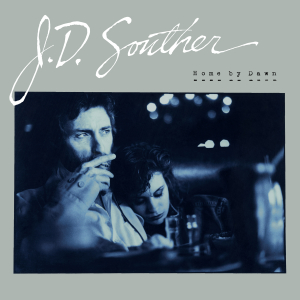 Mettler: Did you transfer them with high-resolution playback in mind?
Mettler: Did you transfer them with high-resolution playback in mind?
Souther: Well, everything we do that’s new, we do in the highest resolution possible, because the goal is to make a great vinyl master. All of my new records since 2008 have come out on vinyl. They’re mastered for vinyl, and they’re 180-gram. They sound wonderful. They certainly sound better than the CDs, and especially better than the downloads.
Mettler: You included some demos and works in progress on these reissues. When you were going through the original tapes, did any song reveal itself to you differently, listening to it 40 years or so later after you recorded it?
Souther: Well, they all did anyway, whether they were on the release master or coming out of the vault and being something I hadn’t listened to for 30-plus years. It didn’t matter at all. They all do something slightly different than they would have when I was in the heat of finishing them.
I think it’s pretty amusing, actually. I had a lot of fun. We listened to them a lot while we were assembling them. When I got the first [self-titled] one, I listened to it, but I really hadn’t heard much of the others. I’ve read a bunch of reviews they’ve been sending me, and it’s very interesting. Some of the stuff is getting much better reviews now than when they came out. (chuckles)
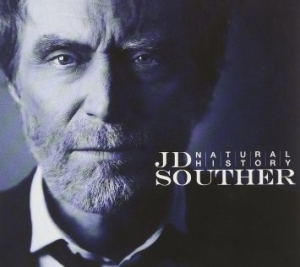 Mettler: Isn’t revisionist history a funny thing? Or maybe we should call it Natural History [the 2011 album where Souther revisits and re-records 11 of his classic tracks]?
Mettler: Isn’t revisionist history a funny thing? Or maybe we should call it Natural History [the 2011 album where Souther revisits and re-records 11 of his classic tracks]?
Souther: (chuckles again) Yeah, it’s hilarious! There are reviewers who take the same tone and attitude and seem to come from a similar place that some of the journalists did initially, but now they’re saying, “Ah, this is the template for modern Americana. This record could have been released yesterday.” It’s so shocking to read that.
I just read one yesterday where the journalist says, “The first record sounds more like a template for hit records by focusing on the vocals. Black Rose is better, but Home by Dawn is by far the best.” The production reminded him of Lindsey Buckingham, and I really sound self-assured in my vocals. It’s just the stuff you’d hear from a third party; these are things you’d never say to yourself.
Mettler: Interesting. I know people say Americana, but knowing your background and how jazz is important to you, plus the classical music and opera that was in your house while you were growing up — all of that was in the cauldron and behind some of your songwriting, I think.
Souther: Yes, definitely. It was just the synthesis of everything I had heard at the time, combined with the fact that I was just learning how to play guitar.
Mettler: That’s right, you didn’t pick up a guitar until you were like 23 or something?
Souther: Yeah, first I was a drummer, and a jazz violinist.
Mettler: But you can’t carry drums on a Triumph motorcycle, as they say — or as you said back then.
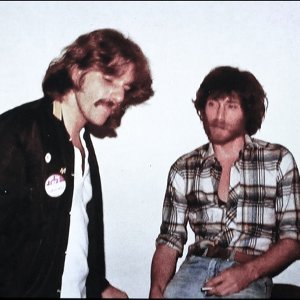
How Long, New Kids: Frey and Souther, in the early days. Bandmates in Longbranch/Pennywhistle waaaay back in the day, then songwriting partners to the very end.
Souther: And it requires juggling skills that I don’t have. You know, we didn’t have much more room when Glenn Frey and I were going to gigs together in my Sunbeam Alpine [in the Los Angeles area in the late ’60s and early ’70s]. We basically had room to barely stack one guitar behind each seat if we pulled the seats all the way forward.
Mettler: I’m sorry about Glenn’s passing. That must have been tough to hear. [Eagles co-founder and Souther’s onetime Longbranch/Pennywhistle bandmate Glenn Frey passed away on January 18, 2016 at age 67.]
Souther: Tough loss. Yeah. We always said we’d write ’em to last. And they seem to have lasted so far; we’ll see.
Mettler: You guys were very meticulous in terms of songs and word choices. Would you agonize over them for a period of time? Tell me a little about that from the songwriter’s point of view.
Souther: We did that for weeks… months! (chuckles) Yes.
Mettler: Is there one line you can cite that took you weeks to figure out, but when you hear it now, it sounds like it came easily?
 Souther: Umm, it’s more like decisions about how to proceed with the story. Fine-tuning the lines — I don’t think anybody really remembers who did what. But I can tell you when some things happened. I know I had the chorus for “New Kid in Town” for about a year before Don [Henley, Eagles co-founder] and Glenn heard it. I couldn’t think of a thing to do with it.
Souther: Umm, it’s more like decisions about how to proceed with the story. Fine-tuning the lines — I don’t think anybody really remembers who did what. But I can tell you when some things happened. I know I had the chorus for “New Kid in Town” for about a year before Don [Henley, Eagles co-founder] and Glenn heard it. I couldn’t think of a thing to do with it.
But it was time for a new album, and we convened at Glenn’s house, as we often did. We sat around his sort of picnic table/dinner table and threw out the legal tablets and pencils. I played him that one and he went, “Yeah! OK, that’s a good way to start the album. It’s a good first single.” I think we spent, geez, a year on that song.
Mettler: Wow. And that’s not a short song, either. It clocks in pretty long for what people considered as singles then, but you don’t really notice it. [The “New Kid in Town” single clocked in at 4:49, cut down from 5:09 on the 1976 Hotel California album itself. The song hit #1 on the Billboard Top 100 singles chart on February 26, 1977.]
Souther: All of ours did! That’s why “Best of My Love” [from 1974’s On the Border] was not released as a single at first. It was too long, it had steel drums and no guitars; it wouldn’t have a chance on radio. [The album version of “Best of My Love” is 4:34; the single version was cut to 3:25.]
Mettler: And look what happened — it became a #1 single! Sorry, Ma! [“Best of My Love” hit #1 on the Billboard Top 100 singles chart on March 1, 1975, almost a full year after On the Border was released.] It just goes to show that the story wins. And the way ”New Kid in Town” unfolded especially rang true to those of us who moved around a lot as youngsters. You could relate to how that story went — right until somebody new came along, to borrow a line.
Souther: Yeah, that’s it: “They will never forget you ’til somebody new comes along.”
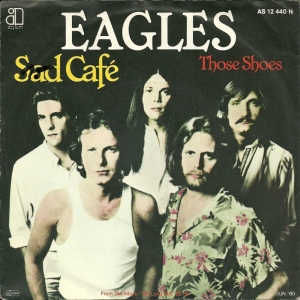 Mettler: I like songs that unfold like that, like the way “The Sad Café” does [from the Eagles’ 1979 album, The Long Run]. You look at the time read out on that [5:35], but it doesn’t matter because you get lost in the storytelling.
Mettler: I like songs that unfold like that, like the way “The Sad Café” does [from the Eagles’ 1979 album, The Long Run]. You look at the time read out on that [5:35], but it doesn’t matter because you get lost in the storytelling.
Souther: That’s a pretty epic situation, and there were four writers involved there [Souther, Don Henley, Glenn Frey, and Joe Walsh]. That was really us talking about our lost innocence.
Mettler: And you still perform that one yourself solo sometimes.
Souther: I do some nights, yeah. It’s actually one of the few songs from that time that I have an unpredictable reaction to. Some nights, it’s really emotional.
Mettler: You were living through things people really hadn’t before in the post-War era, and then writing about them.
Souther: Also, the first of our friends were starting to die off — from drugs, car accidents, and various things. It was an eye-opening time. We spent a lot of time in that restaurant at the back table there, just talking about our lives, what was going to become of us, and what had become of some of us. It’s an interesting song. It’s an autobiographical song written by four people.
Mettler: It seems to have a lot more resonance now, considering all those who’ve passed away recently. You feel it even deeper.
Souther: (slight pause) Well, every time one of the tribe leaves the fire, everybody has to move in a little closer.
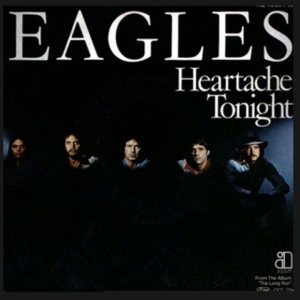 Mettler: I’m glad we have this music in the world, at least. Speaking of four songwriters, there were also four of you credited on “Heartache Tonight,” which seemed to come together in an interesting way. [The four writers for “Heartache Tonight” are Henley, Frey, Souther, and Bob Seger.]
Mettler: I’m glad we have this music in the world, at least. Speaking of four songwriters, there were also four of you credited on “Heartache Tonight,” which seemed to come together in an interesting way. [The four writers for “Heartache Tonight” are Henley, Frey, Souther, and Bob Seger.]
Souther: (chuckles) Yes it did. Glenn and I started it, and it was fine. We were standing around my house listening to Sam Cooke records. It stated the way the records does — we had the guitar intro and were clapping our hands and singing the stuff, but we couldn’t think of a chorus, the way to get back to the verse again. So I was on the phone with Bob Seger and I sang it to him, and he said, “Well, how about this?” And he sang the chorus.
You take it from anywhere it comes. We were all friends, we all sang, and we had a similar interest in making things sound as good as possible. Actually, Glenn called me and asked, “How do you feel about having four writers on this song?” I said, “Well, that’s a lot of ways to split the money, but it’s really good. Really good.” (chuckles)
Mettler: I was a kid growing up in Pittsburgh, and I remember the first time I heard “Heartache Tonight” on the radio. You could sing along with it right away. As a listener, you just clued right into that song instantaneously.
Souther: That’s nice to hear. It was designed to be a catchy tune — a summer kind of feel-good song. [“Heartache Tonight” was released as a single on September 18, 1979, and hit #1 on the Billboard Hot 100 singles chart almost 2 months later on November 10, 1979.]
Mettler: Well, mission accomplished.
Souther: Yeah, I’d say! (both laugh)
Mettler: Another one of your collaborators I spoke with back in 2014 is one who has golden ears — Linda Ronstadt. I think you once said something like, “you need to be a great listener to be a great musician,” and that certainly applies to Linda, wouldn’t you say?
Souther: She’s the best listener I know, yeah.
Mettler: Something she mentioned to me was, after you had read her book [Simple Dreams], you called her and talked about the B-29s that flew overhead in Tucson. Could you tell me that story from your point of view?
Souther: They lived close to an Air Force base too. I grew up in Amarillo, Texas — which is also outside an Air Force base — and she made reference to Nelson Riddle and how the charts he had written always had this great “hum” in them. It’s not bass like a subwoofer; it’s just a real hearty, cello-range, upper-bass-range strength that was there. And she said it reminded her of the planes that were taking off from the air base near her when she was growing up. I reminded her that B-29s flew during World War II, so that’s probably not what she heard.
But we had a few in Amarillo too, and I actually tried to figure out what the notes were with the B-52s and other various planes that took off. I couldn’t figure it out, and she finally said, “Well, I don’t know what the frequencies were. It was just the feeling that was always there on Nelson’s charts.” He was one of the great arrangers of our lifetime.
Mettler: I think it was the fourths and fifths, is what she said. You grow up with certain sounds, and they just get ingrained into your songwriting. You had a jazz background, and the clarinet was one of the earliest instruments you played.
Souther: It’s true. First I played violin, then I played clarinet. I started to play tenor sax, but it was a little big for me. I went to clarinet in the 5th grade. I was a pretty small kid in high school, so tenor was a little bit ungainly for me. But they also needed a clarinet player. It’s the same key and the same fingering, so I learned that. I moved over to tenor a little later, and I was quite happy with that until I discovered drums. And I went, “Ah hah! This is where I must be.”
Mettler: Did being a drummer help with the rhythm that’s inherent in a lot of your songwriting?
Souther: I hope so. It’s a great instrument. I was a big-band kid, and there’s nothing more fun than playing drums in a big horn band. Just ridiculously fun.
Mettler: Your parents played a lot of music in the house. Is there one record you’d consider to be the first one you clued into personally, on your own?
Souther: I first started buying rock & roll records when I had a paper route in the 7th or 8th grade, but the first record that I remember buying that absolutely killed me — I’m sure they were either Ray Charles records, or The Everly Brothers. I feel that Ray Charles is the most important musician of the second half of the 20th Century. He changed everything about music. He played fantastic R&B and a lot of churchy-gospely stuff, and then he had huge rock & roll hits, and he made great jazz. He and Quincy Jones were partners. The charts for those records were amazing. And he also did incredible standards. When he put out the Modern Sounds in Country and Western Music [in April 1962], he pretty much conquered the world.
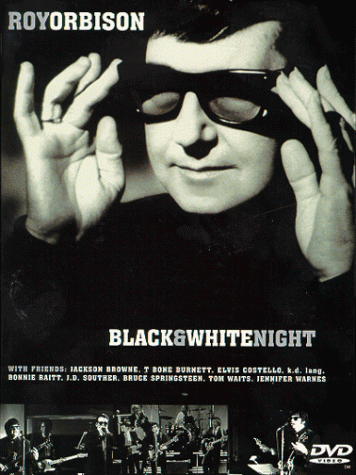 Mettler: He sure did. And somebody else you worked with later in life, Roy Orbison, must have also been a huge influence at the time.
Mettler: He sure did. And somebody else you worked with later in life, Roy Orbison, must have also been a huge influence at the time.
Souther: He was most definitely an influence. He was a beautiful singer, a beautiful guy, and the songs are absolutely flawless. And the records are good too. They really made astonishingly good records. I got to know him later in life. Just amazing.
Mettler: How spot-on was his voice while you worked on A Black and White Night together [in 1987, and released in 1988]?
Souther: I’ll tell you what — it was still damn good after 40 or so years of singing on the road and in clubs. Yes, he still had a gorgeous, gorgeous voice, and a lot of range. He had a great feel for music. He was a delightful guy. Fun to write with, fun to sing with. I hear him in all of us.
Tom Petty told him once when they were working on The Traveling Wilburys record [Vol. 1, released in October 1988], “You might just be the best rock & roll singer in history.” The story is, he said (affects Orbison drawl), “Well… you might be right.” (both laugh) I don’t know if that’s true or not, but he was awfully good.
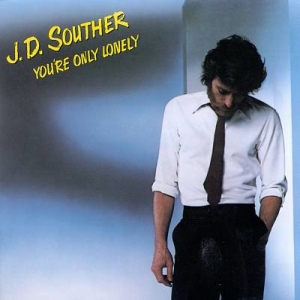 Mettler: I recently saw Bruce Springsteen in New Jersey [on January 31, 2016], and when he sang the line, “Roy Orbison singing for the lonely” [in “Thunder Road”], I felt a nice thread among the three of you. It made me think about your Top 10 1979 hit “You’re Only Lonely,” which does have a bit of a Roy feel to it. It all rolled together there in that one moment.
Mettler: I recently saw Bruce Springsteen in New Jersey [on January 31, 2016], and when he sang the line, “Roy Orbison singing for the lonely” [in “Thunder Road”], I felt a nice thread among the three of you. It made me think about your Top 10 1979 hit “You’re Only Lonely,” which does have a bit of a Roy feel to it. It all rolled together there in that one moment.
Souther: It does have that kind of Roy feel to the song, yeah. After it came out, Roy told me his wife Barbara parsed every line of that song, looking for something. And he kept telling her, “Barbara, you’re not going to find anything. It’s not the same.” What is the same is that drumbeat is the same as another Roy record called “I’m Hurtin’” [released in 1960]. It has the same kind of breaks in it.
Mettler: It just goes to show what’s in a songwriter’s DNA gets amalgamated into bits and pieces that then become an original thing — in your case, that JD Thing, as I’ll call it. (Souther laughs) Let’s get more into vinyl. Is that the way you personally listen to music the most?
Souther: If I can get what I want to hear on vinyl, then yes. Fortunately, I didn’t throw any of it away. I’ve got a lot of vinyl.
Mettler: What kind of turntable do you have?
Souther: I had Audio-Technica as a sponsor for years, so I bought a lot of Audio-Technica stuff. (chuckles) And I had two Luxman turntables. In the guest house, I still use a big Luxman amp and tuner, and there might be a Luxman turntable over there somewhere.
But Audio-Technica gave me such great microphones, and they gave me some of their turntables too — which, by the way, are really great, and go for a reasonable price. I always encourage people at gigs to go to an independent record store and buy a turntable. They go for much less money than they had before. And if you can be bothered to go get a cartridge put in, they sound as good as the old expensive ones used to.
Mettler: I’m with you on that. I had to get the right cartridge for my reference turntable when I first bought it, and I’m glad I did. I can’t imagine dropping anything else down on 180-gram records these days.
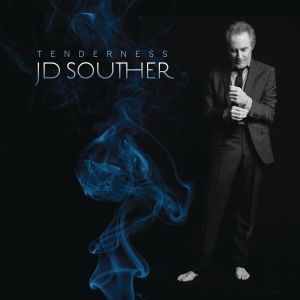 Souther: You know something? It’s so critical. When I got the vinyl copies of Tenderness, the album I put out on Sony Masterworks last year [in May 2015], I thought, “This isn’t quite as great a pressing as it should be.” It was done by Bernie Grundman, one of the last great artists of mastering, and my producer Larry Klein was there for the cutting of it. These guys can’t think this is pretty good and me think it’s not. Sure enough, it was me using a faulty needle. I swapped it out, put it back on, and went, “Oh my God, this sounds great!”
Souther: You know something? It’s so critical. When I got the vinyl copies of Tenderness, the album I put out on Sony Masterworks last year [in May 2015], I thought, “This isn’t quite as great a pressing as it should be.” It was done by Bernie Grundman, one of the last great artists of mastering, and my producer Larry Klein was there for the cutting of it. These guys can’t think this is pretty good and me think it’s not. Sure enough, it was me using a faulty needle. I swapped it out, put it back on, and went, “Oh my God, this sounds great!”
Mettler: That can do it. I have Tenderness on CD, so I’ll have to make sure to get it on vinyl too.
Souther: You’ll really like that one. The strings are just wonderful. You have to hear the vinyl — it’s a revelation. Larry told me after he heard it, “I’m not going to say anything. Just go home and put on the beginning of the record and hear how it starts, with the string section [on the lead track, ‘Come What May’].”
Mettler: Oh man, I’m looking forward to dropping the needle on that. What kind of speakers do you have in your system?
Souther: I have four sets of speakers. What I listen to almost all the time I’m almost embarrassed to tell you — they’re the same JBL 4310s Linda and I listened to when we were living together. I also have some JBL 4311s and some Tannoys, Genelecs, and Yamahas, but the ones that I really like are these big, warm 4310s and 4311s.
Mettler: I can understand that, because if you like a particular speaker and its sound, you tend to stick with it — especially ones like those JBLs, which were built to last.
Souther: They were definitely built to last. They’re wonderful, and they’ve definitely got that deep midrange that you talked about with Linda.
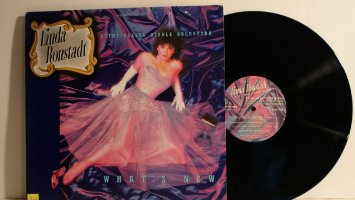 Mettler: Is there a particular favorite album of hers that you still put on the turntable?
Mettler: Is there a particular favorite album of hers that you still put on the turntable?
Souther: My favorite stuff that Linda ever did were the three albums with Nelson Riddle [1983’s What’s New, 1984’s Lush Life, and 1986’s For Sentimental Reasons]. Those three records are just magnificent. She really studied that material for years, and we talked about it for a really long time. I remember the record company thinking it was a bad idea at the time, and she had people going, “Hey, you’re a country rock singer!” I remember saying to her, “No, you must go for this! You gotta do this!”
When we were together, we listened to those [Frank] Sinatra and Nelson Riddle records all the time. And I think she did a great job. Actually, In the car coming home from dinner last night, I was listening to her version of “Skylark” [written in 1941 by Johnny Mercer and Hoagy Carmichael and recorded by Glenn Miller and His Orchestra in 1942; Linda’s version on Lush Life was nominated for a Grammy]. Absolutely magnificent.
I’m on the record for wanting to see everything of hers re-released in the highest quality possible.
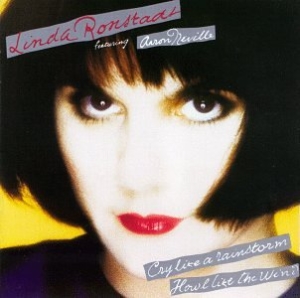 Mettler: She and I talked about that too. Cry Like a Rainstorm, Howl Like the Wind (1989) was recorded at the Skywalker Ranch, and she had to make sure it was done up to that standard. It’s one of the best recordings she’s done, studio-wise.
Mettler: She and I talked about that too. Cry Like a Rainstorm, Howl Like the Wind (1989) was recorded at the Skywalker Ranch, and she had to make sure it was done up to that standard. It’s one of the best recordings she’s done, studio-wise.
Souther: I think when she was recording up there, George Massenburg was engineering, right? There’s no more meticulous human being alive than him.
Mettler: Yes, he was. That was a perfect marriage there. Do you feel high resolution is the best way for listeners to hear things these days?
Souther: I think it’s the best we’ve got, yeah. You need the highest res if you’re going to do it digitally, and then to go through the incredibly cautious and critical mastering process to get to the vinyl. And, of course, you’re depending on your pressing plant to do a good job. Sometimes they do, and sometimes they do less than a good job, after you listen to your test pressings.
Mettler: True, and sometimes those subtleties and detail you spent all that time crafting can get lost.
Souther: Yes. You just slice and dice the signal so many times to get everything you want out of that.
I’ve had this conversation with Linda a lot. She was listening to something in the kitchen on a system that could have been much better. They’re fine for what they are, but she said, “Oh, John David, just give it up. We gave up quality for convenience years ago.”
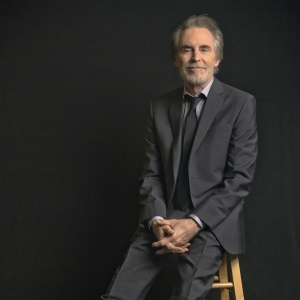 Mettler: Getting back to the high end of things, what would you consider to be an optimal surround-sound mix?
Mettler: Getting back to the high end of things, what would you consider to be an optimal surround-sound mix?
Souther: There are two schools of thought on that. One is that the ideal listening spot is in the middle of the band onstage. I never agreed with that. I like being in the audience and feeling the band coming at me from the stage. I don’t want to hear the guitar player in front of me and the drummer off to the right of me.
I think it’s a real artform to make it serve all those masters. Personally, my preference — and maybe it’s not everyone’s — is maybe sitting on the drums in the back with the band in front, or sitting right in the middle of the audience. And not in the front row.
Mettler: I agree. I never want to be in the front like that. I want some of that natural delay coming at me.
Souther: Yes, and also, you want the sound to develop a little bit. Possibly that matters less in a medium-size hall with rock & roll when you have amplifiers and drums, but if you go watch jazz or symphonic music with upright basses, you realize the bass doesn’t even speak until it gets 10 or 12 feet out in front of the instrument. That’s why bass players seem to be rushing, even though they’re not. It just takes a moment for it to actually speak.
The same thing goes for listening to orchestral music, or any music that has any subtlety. It just takes a minute for it to develop. It needs a little bit of space for that.
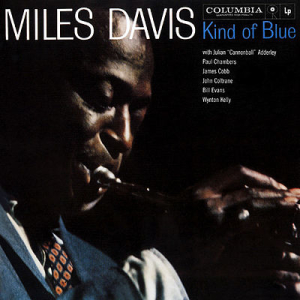 Mettler: That’s how I feel whenever I put on the high-res version of Miles Davis’ Kind of Blue (1959) or the Dave Brubeck Quartet’s Time Out (1959), especially with that Joe Morello drum solo.
Mettler: That’s how I feel whenever I put on the high-res version of Miles Davis’ Kind of Blue (1959) or the Dave Brubeck Quartet’s Time Out (1959), especially with that Joe Morello drum solo.
Souther: Oh, that drum solo changed my life! That was the first drum solo I ever heard where the drums were loud. Also, Joe didn’t like putting those pads on the drums. Everybody tightened up those pads so they wouldn’t ring as much — but not Joe Morello. It’s an absolute clinic in sound — and obviously in drumming as well.
You just made me think of something else — the beginning of “So What,” the first track of Kind of Blue, where the bass is kind of wubby, and you can’t tell what’s going on and who’s coming in where. It’s like the beginning of a Keith Richards track: Where’s “one”? (both laugh)
Mettler: It’s great that we have hi-res options for Kind of Blue too.
Souther: If you have a really good system and a really good pressing of that record, the overtones from Paul Chambers’ bass are just stunning. They’re all over the room. That’s probably the most perfect record to listen to. It’s an absolutely flawless record.
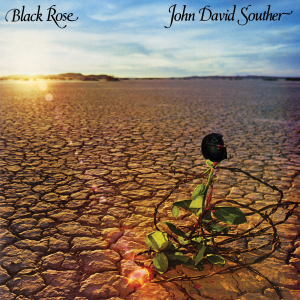 Mettler: Hard to argue with you on that. Well, to bring it back to you to wrap things up, having this three-record arc of your solo career must be refreshing — I mean, to enable people to access this music all at once. For a while, it was almost impossible to do that.
Mettler: Hard to argue with you on that. Well, to bring it back to you to wrap things up, having this three-record arc of your solo career must be refreshing — I mean, to enable people to access this music all at once. For a while, it was almost impossible to do that.
Souther: It really is satisfying to have it all there, and to see people be able to react to it in such a short time. I love it.
Mettler: And two of the title tracks are examples of two different styles of your playing. They encapsulate the breadth of how you record. I like the subtlety of “Black Rose” and how it ends with those great harmonies, and then the ’80s rockabilly sound of “Home by Dawn.” You defined an era of individual style before your time.
Souther: Well, I never really do know where I’m positioned in time. I just tried to make records that sounded interesting to me that I’d never heard before.
Tags: 180-gram, A Black and White Night, Audio Technica, Bernie Grundman, Best of My Love, Black Rose, Bob Seger, Bonnie Raitt, Cheryl Pawelski, Cry Like a Rainstorm Howl Like the Wind, Dave Brubeck Quartet, Eagles, For Sentimental Reasons, Genelec, Glenn Frey, Heartache Tonight, Home by Dawn, Hotel California, I'm Hurtin, JBL, JD Souther, Joe Morello, Joe Walsh, John David Souther, Kind of Blue, Larry Klein, Linda Ronstadt, Longbranch Pennywhistle, LP, Lush Life, Luxman, Miles Davis, Natural History, Nelson Riddle, New Kid in Town, Omnivore Records, On the Border, Paul Chambers, plug-ins, Pro Tools, Ray Charles, Roy Orbison, Skylark, So What, Tannoy, Tenderness, The Long Run, The Sad Cafe, The Traveling Wilburys, Time Out, vinyl, What's New, Yamaha, You're Only Lonely